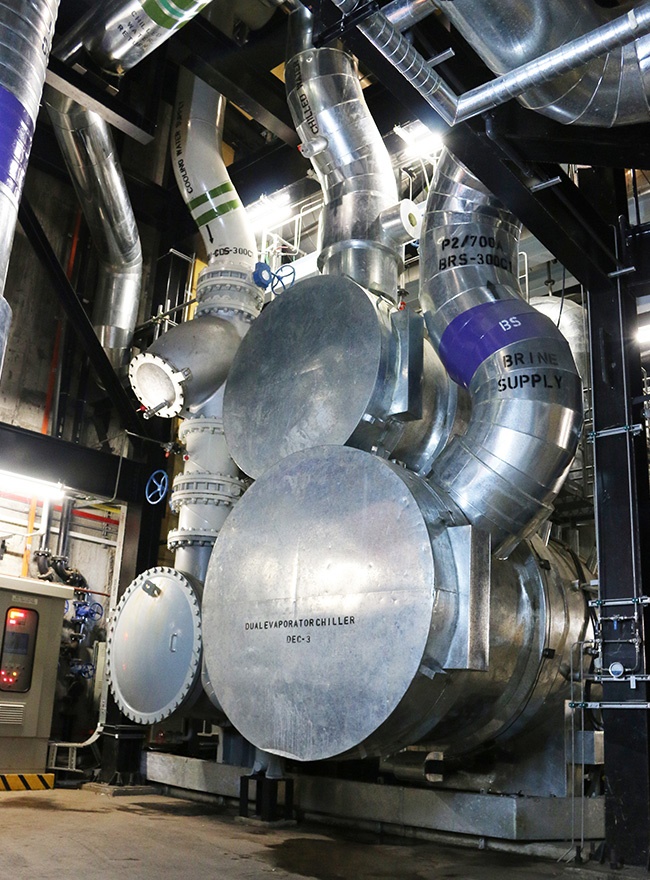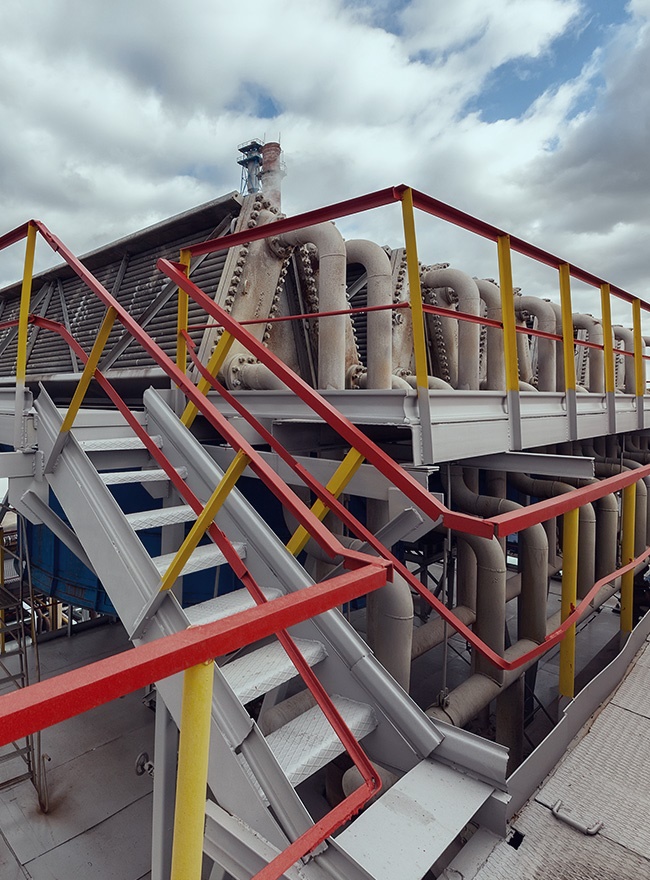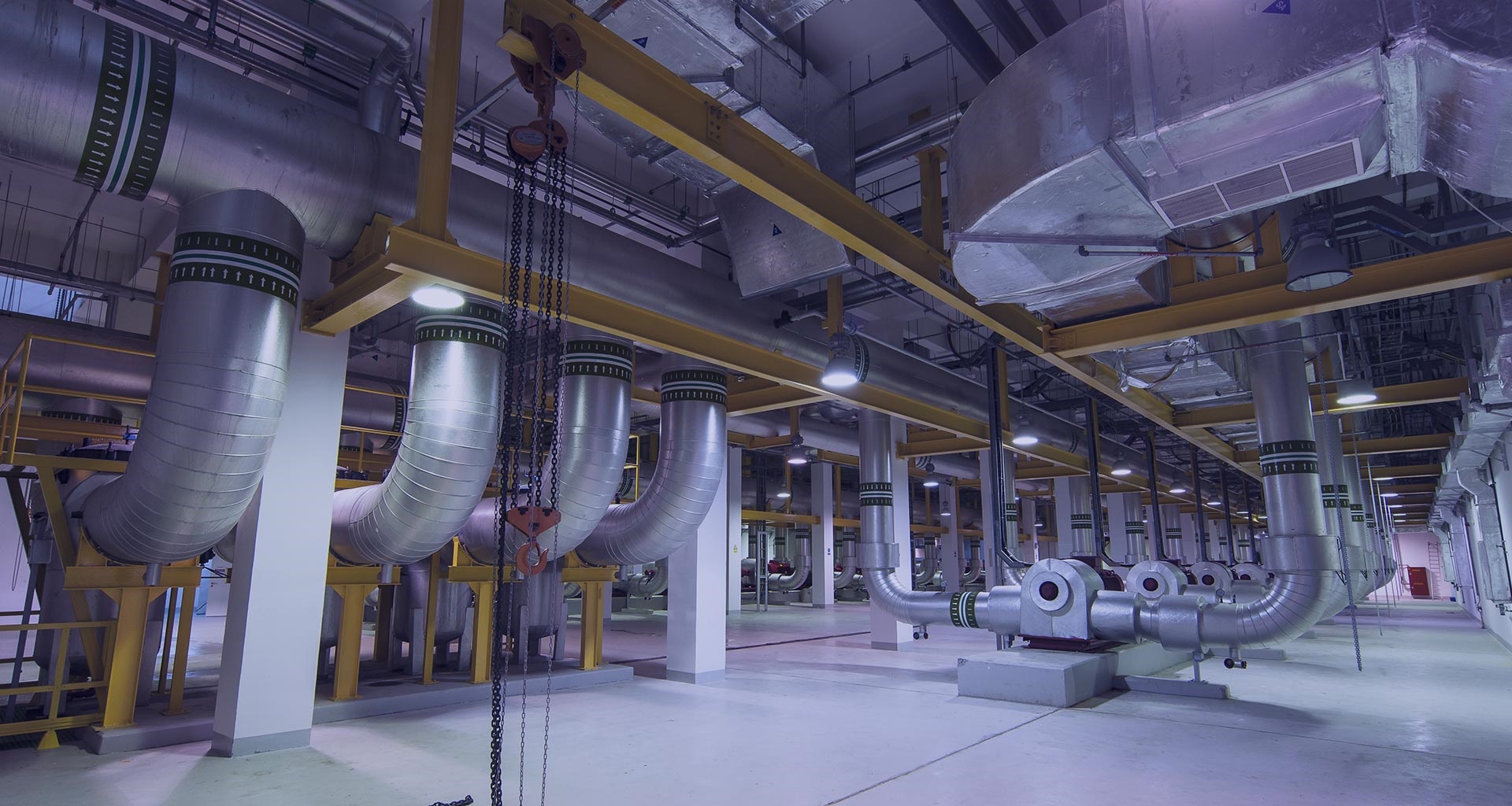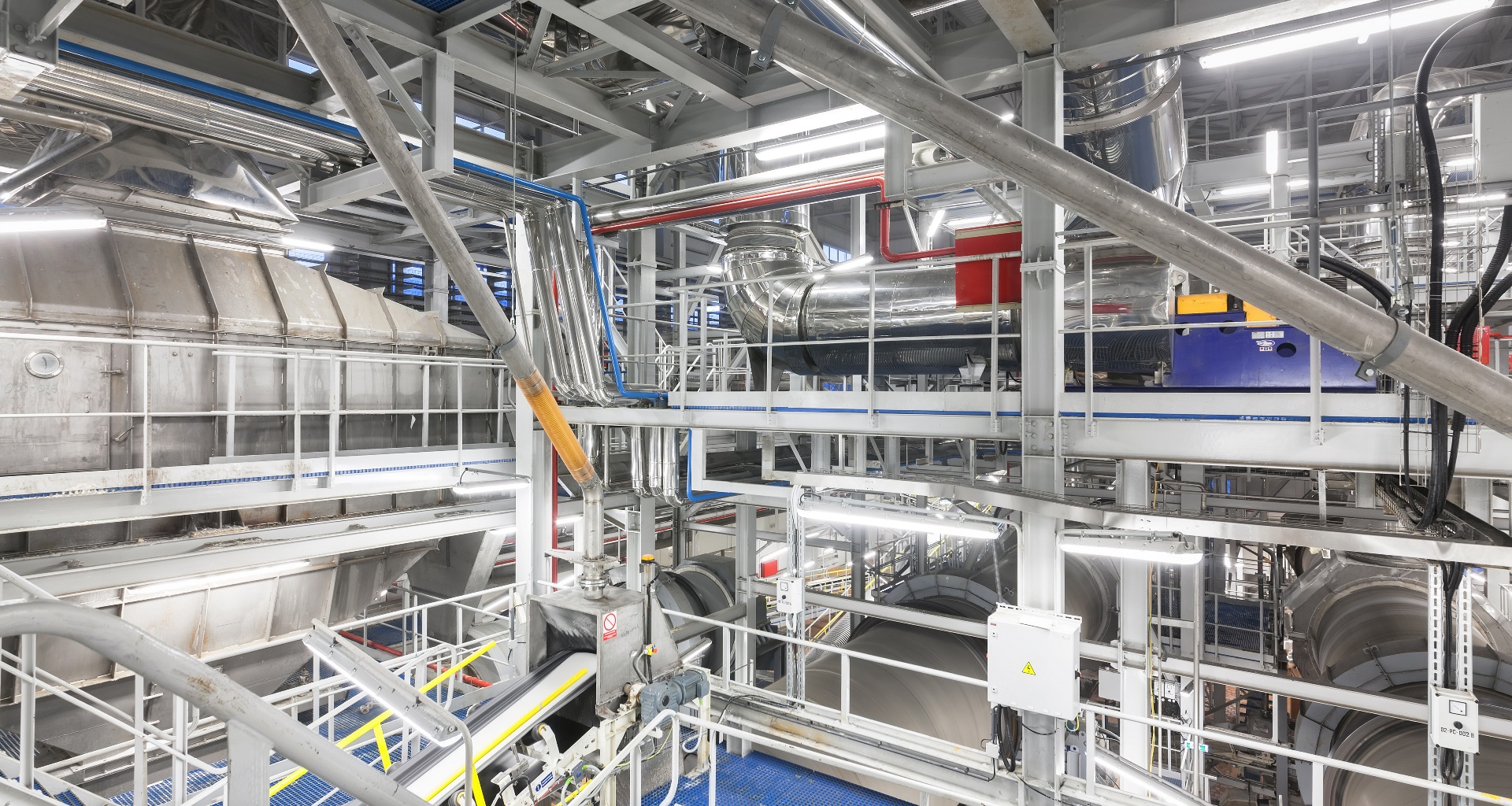Overview
“District cooling creates value, not only to customers, but also to society at a socio-economic level by conserving our natural resources and preserving the environment.” District Cooling is a contemporary, sustainable, and cost-effective way to air condition a network of buildings allowing increased efficiency, stabilization of electric loads, and reduced costs when compared to cooling buildings individually.

Central cooling plants house large industrial-grade equipment that produce chilled water. This chilled water is directed to buildings through an insulated underground piping network.When the water enters the building, it flows through a heat exchanger, absorbing heat from the building space. The water is then recirculated back to the central plant through a closed loop piping system.




